천식의 증상 징후가 생기는 기전, The mechanism of development of asthma attack symptoms and signs
천식의 증상 징후가 생기는 기전
- 천식의 증상 징후는 수축되고 좁아진 기도의 정도, 기도 내로 분비된 가래(점액)의 양, 환아의 나이, 합병증의 유무 등 여러 조건에 따라 다르다. (여기서 기관지와 기도를 때로는 같은 의미로 썼다.)
- 천식이 심하게 발작되면 기도가 더 심하게 수축되고 더 좁아진다.
- 코나 입을 통해 들이 흡입한 공기가 좁아진 기도 속을 정상적으로 통과해서 폐포 속으로 들어가서 그 다음 폐포 속에서 폐혈관 속으로 충분히 들어가지 못하고, 또 몸속에서 생긴 이산화탄소 등이 폐포 속으로 들어온 후 좁아진 기도 속을 통과해서 코나 입을 통해 몸 밖으로 내쉬기가 어렵게 된다.
- 천식이 심하게 발작됐을 때, 보통 때와 같이 정상적으로 호흡하면, 산소를 충분히 섭취할 수 없기 때문에 숨을 더 자주 쉬어야 하고 숨쉬기가 힘들다.
- 천식 발작이 없는 보통 때와 같이 산소 섭취가 충분하지 못해 산소 결핍증, 또는 저산소증이 생기면서 숨을 더 자주 쉬게 되고 숨이 가빠진다. 필요한 만큼 산소를 섭취하지 못하면 얼굴이 창백해지며 정신이 불안해지고, 신경질적이 된다.
- 경증 지속 천식 발작이 유발되었을 때의 증상 징후는 심한 천식이 있을 때의 증상 징후 보다 상당히 경하게 나타나는 것이 일반적이다.
- 천식 발작이 유발되었을 때는 정도 차이는 있지만 끈적거리는 점액이 기관지 점막층에서 기관지 기도 내로 가래가 분비될 수 있다.(그림 164 참조)
- 분비된 가래의 양과 정도에 따라 기도 속이 막히는 정도가 다르며 가래를 뱉어내기 위해 기침을 하게 된다.
- 기도 속에 있는 가래가 숨 쉴 때마다 기도 속을 통과해 들어가고 나가는 공기로 진동되어 생기는 가래 소리를 가래가 끓는다고 한다.
- 천식 발작이 유발될 때 기관지 속에 분비된 가래로 기도 속의 일부 또는 상당 부분이 막히면 숨쉬기가 곤란해지고 가래를 뱉기 위해 기침을 하게 된다. 뱉을 가래가 기도 속에 없어도 기관지에 생긴 염증으로 기관지가 자극받으면 기침을 하게 된다.
- 일반적으로 과거에 천식 발작이 유발되어 앓았던 과거 천식 병력이 있는 아이들에게 천식 발작이 유발되어 있지 않은 동안은 기침, 숨 가쁨, 가래 끓는 등의 증상 징후가 없이 건강하게 지낸다.
- 그러다가 천식 발작 유발인자로 기도가 자극받으면 다시 천식 발작이 유발되어 기관지 천식의 증상 징후가 나타날 수 있다.
- 이때 천식 발작의 증상 징후를 적절히 치료하면 그 천식 발작은 낫게 되지만 그 후 또 천식 발작 유발 인자에 노출되면 다시 천식 발작이 반복적으로 유발 되는 것이 천식의 일반적인 자연 진행경과이다.
- 천식 발작이 유발되어 기관지가 심하게 수축되고 좁아진 기관지 부분의 기도 속을 통해 공기를 내쉬고 들이쉴 때 숨소리가 그렁거리거나 색색거릴 수 있다. 특히 공기를 내 쉴 때 가는 휘파람 소리와 비슷하게 숨소리가 날 수 있다. 이렇게 숨을 내 쉴 때 휘파람 소리와 비슷한 숨소리를 호기성 천명, 또는 천식음(천음)이라고 한다.
- 천식 발작이 심하게 유발될 때 숨을 내쉬는 동안에 생기는 숨소리를 호기성 천명(Expiratory wheezing)이라고 하며 크루프가 있을 때는 숨을 세게 들이쉬는 동안에 협착음이 생기는 것이 보통이다. 이런 숨소리를 흡기성 협착음(Inspiratory stridor)이라고 한다.
- 천식 발작이 아주 경미하게 유발될 때는 천명이 거의 나타나지 않고 들리지도 않을 수 있고 천식 발작이 심하게 발작됐을 때 정상적으로 숨 쉴 수가 없기 때문에 천명이 크게 나지 않을 수 있다. 이런 때는 맨 귀로는 천명을 들을 수 없으나 청진기로 진찰할 때 천명이 들릴 수 있다.
- 중증 지속 천식 발작이 유발됐을 때 비정상적으로 아주 약하게 숨을 쉬기도 한다. 경도 지속 천식 발작이 있을 때 거의 들리지 않게 나기도 하고 가만히 숨 쉴 때 기도에서 천명이 나는데도 청진기 없이 맨 귀로는 천명을 들을 수 없는 때도 있다. 이런 이유로 어떤 부모는 “천명이 나지도 않는데 어떻게 천식이 있다고 진단 붙이느냐”고 반문하기도 한다.
- 경도 지속 천식을 앓을 때 대부분의 경우, 천명이 거의 나지 않지만 육체적 활동을 보통 때보다 더 심하게 하면 천명이 현저하게 날 수 있다.
- 경도 지속 천식이 있는 아이가 정신적 육체적 안정을 취할 때는 천명이 거의 나지 않을 수 있지만 숨을 일부러 힘들여 크게 쉬면 맨 귀로 들릴 수 있을 정도로 천명이 크게 날 수 있다.
- 중등도 지속 천식이나 중증 지속 천식 발작이 유발될 때 색색 숨을 쉬거나 그렁그렁 숨을 쉬거나, 휘파람 소리같이 가는 호기성 천명이 숨을 내쉴 때마다 나는 것이 보통이다. 그리고 천식을 앓는 아이 자신과 주위 사람들도 맨 귀로 들을 수 있을 정도의 호기성 천명이 크게 날 수 있다.
- 중증 지속 천식 발작이 유발되면 숨을 제대로 쉬지 못할 때가 많아서 흡입한 공기가 기관지 기도 부분 속을 통과해서 폐포 속으로 제대로 들어갈 수 없고 폐포 속에서 나온 공기가 제대로 나올 수 없다. 즉, 숨을 정상적으로 들이쉬지도 내쉬지도 못하고 숨을 아주 약하게 쉬는 현상이 생긴다.
- 때로는 중증 지속 천식 발작이 심하게 유발되어 있지만 천명이 아예 들리지 않을 수 있다. 이런 정도로 심한 중증 지속 천식을 앓을 때는 생명이 위험하다.
- 아주 경미한 경도 지속 천식 발작이 영유아들에게나 학령기 아이들에게 유발되면 천명이 들리지 않고 다소 기침을 할 수 있다.
- 특히 밤에 자다가 경도의 천식이 발작되어 천명도 없고 기침도 하지 않지만 자주 깰 수 있다. 밤에 잠자는 동안에 천명이 나지도 들리지도 않고 기침만 할 수 있어 밤잠을 제대로 자지 못하기 때문에 보챌 수 있다.
- 기침을 하다가 구토하는 경우도 있으며 소아 천식 환자의 대부분은 맨 귀로 천명을 들을 수 없는 천식을 앓는다.
| 천명이 없다고 해서 또는 천명이 들리지 않다고 해서 기관지 천식이 없다고 또는 기관지 천식이 아니라고 진단할 수 없다. |
천식 발작이 유발되는 기전을 요약하면
- 천식 유전 인자를 지니고 태어난 소아들의 기도가 유발인자에 노출되면 천식 발작이 유발될 수 있다. 천식은 유전성 호흡기병으로 취급한다.
- 알레르기 인자, 즉 항원으로 천식 발작이 유발되면 알레르기성 천식이라 한다. 소아들에게 생기는 소아 천식의 대부분은 알레르기성 천식이다.
- 입이나 코를 통해 흡입된 항원에 기도가 노출되면 항원 항체 이상 반응이 기도 내에서 생긴다. 그래서 천식 발작이 유발되면 기도 내에서 다음과 같은 변화가 통상적으로 생긴다.
① 비만세포와 염기호성 백혈구에서 히스타민과 류코트리엔이 분비되고
② 주요 호염기구 세포독성 효소(Major basophilic protein, MBP)가 분비되고
③ 폐포 거대세포에서 프로스타글란딘, 혈소판 활성화 인자(Platelet activating factor, PAF )가 생성된다.
④ 히스타민 등 생화학 물질을 매개체라고 한다.
⑤ 이런 매개체가 복합적으로 작용해서 기도 점막층이 손상되고, 점막층이 붓고, 염증이 생기고, 기도 벽 평활근이 수축되고, 기도가 수축되고, 점액이 분비되고, 그 점액은 가래가 되고 가래를 뱉으려고 기침을 하게 된다.
⑥ 히스타민과 여러 종류의 매개체가 복합적으로 작용해 천식이 발작된다.
⑦ 천식 유전 인자를 지니고 있는 아이들의 기도가 외적 유발인자나 내적 유발인자에 접촉될 때 천식이 발작될 수 있다. 우유나 달걀 등 음식물을 섭취할 때 그 음식물의 단백질 즉, 항원으로 천식 발작이 유발될 수 있다.
⑧ 천식을 유발시키는 유발 인자에는 여러 가지가 있지만 유발인자를 확실히 찾아낼 수 없는 때도 많다.
천식 발작 유발의 유발인자
① 친부모 형제자매들 중 누군가가 아토피 피부염, 알레르기 비염, 식품 알레르기, 천식, 약물 알레르기, 옻나무 접촉성 피부염, 곤충 알레르기, 그밖에 다른 알레르기 질환이 있는 과거 병력이나 현재 병력이 있거나, 아토피 체질이 있을 때 그 집안 형제자매들은 천식, 알레르기비염, 또는 아토피 피부염 등 알레르기 질환에 걸릴 가능성이 아주 많다. 이와 같이 천식은 유전병의 일종이다.
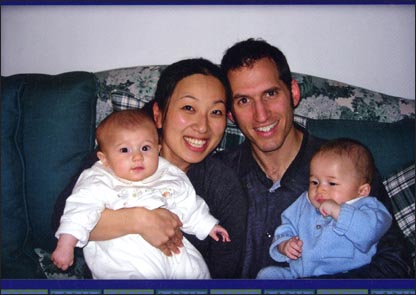
사진 108.▴ 사진 168. 천식은 유전성 질환이다.
Copyright ⓒ 2012 John Sangwon Lee, MD., FAAP
② 달리기, 수영, 뛰기 등 육체적 운동으로 천식 발작이 유발될 수 있다. 이와 같이 육체적 운동으로 유발된 천식 발작을 육체적 운동 유발천식 , 또는 운동 유발천식 이라고 한다.
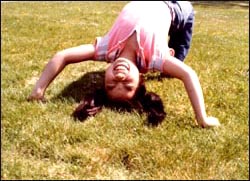
사진 169. 육체적 운동으로 천식 발작이 유발될 수 있다.
Copyrightⓒ 2011 John Sangwon Lee, MD., FAAP

사진 170. 육체적 운동으로 천식 발작이 유발될 수 있다.
Copyrightⓒ 2011 John Sangwon Lee, MD., FAAP
③ 감기나 바이러스성 상기도 감염병, 바이러스성 하기도 감염병, 그 외 다른 바이러스성 감염병으로 천식 발작이 유발될 수 있다.
감기 등 바이러스성 상기도 감염병으로 유발되는 천식을 바이러스 유발성 천식이라고 한다.
급성 세기관지염을 앓았던 과거 병력이 있는 영유아들의 70%에서 천식 발작이 유발된다고 한다.
그 이유는 확실히 모른다.
[부모도 반의사가 되어야한다-소아가정간호백과]-제8권 소아청소년 호흡기 질환-감기, 바이러스성 급성 후두염 참조
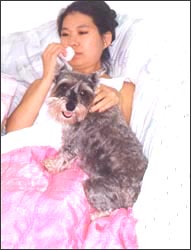
사진 171. 감기나 독감 등 바이러스성 상기도염, 또는 바이러스성 하기도염으로 천식발작이 유발될 수 있다. 일반적으로 박테리아성 상·하기도 감염병이 있을 때는 그로 인해 천식 발작이 유발되지 않는 다. Copyrightⓒ 2011 John Sangwon Lee, MD.,FAAP
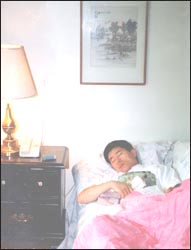
사진 172. 잠자는 동안 천식 발작이 유발될 수 있으며 이를 수면 유발성 천식 또는 야간 수면성 천식이라 한다. Copyrightⓒ 2011 John Sangwon Lee, MD.FAAP
④ 담배 연기, 공장의 굴뚝에서 나는 연기, 자동차 배기가스, 오염된 공기, 휘발유, 페인트, 휘발성 화학물질에서 나는 냄새와 증기, 독성가스, 향수, 화장품, 또는 청소용 화학 물질 등으로 천식 발작이 유발될 수 있는데 이것은 알레르기성 천식이 아니다.
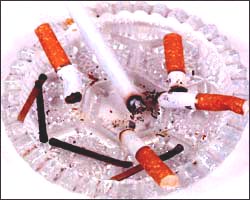
사진 173. 직접, 또는 간접 흡연으로 천식 발작이 유발될 수 있다.
Copyrightⓒ 2011 John Sangwon Lee, MD., FAAP
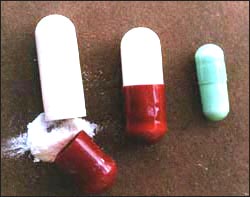
사진 174. 아스피린 등 어떤 종류의 약물로 천식 발작이 유발될 수 있다.
Copyrightⓒ 2011 John Sangwon Lee, MD., FAAP
⑤ 아스피린, 예방접종 백신, 페니실린, 마취제, 또는 그 외 다른 약물 등으로 천식 발작이 유발될 수 있다.
⑥ 우유, 달걀, 견과류, 땅콩, 초콜릿, 생선, 밀가루 음식물, 또는 음식물 첨가물과 인공음식물 색소 등 음식물 성분으로 천식 발작이 유발될 수 있다.
⑦ 찬 공기, 기온의 변화, 또는 습도의 변화 등으로 천식 발작이 유발될 수 있다. 찬 공기로 유발된 천식을 한랭 유발 천식이라고 한다.
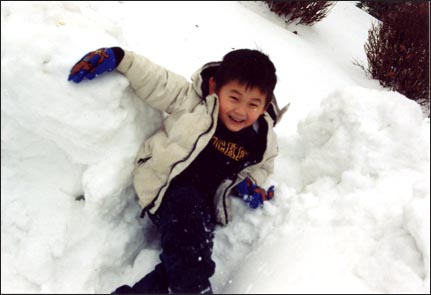
사진 175. 찬 공기, 기온의 변화, 또는 습도의 변화 등으로 천식 발작이 유발될 수 있다.
Copyrightⓒ 2011 John Sangwon Lee, MD.FAAP
⑧ 개, 고양이, 새 털, 비듬, 침, 소변 등으로 천식 발작이 유발될 수 있다. 짐승의 털이나 새 깃털로 만든 베개나 이불 등으로 천식 발작이 유발될 수 있다. 특히 잘 때 그런 종류의 베개를 베고 자면 야간성 천식 발작이 잘 유발될 수 있다.
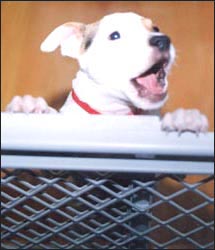
사진 176. 개의 털, 비듬, 침 등으로 천식 발작이 유발될 수 있다.
Copyrightⓒ 2011 John Sangwon Lee, MD., FAAP
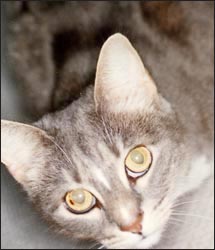
사진 177. 고양이의 털, 비듬, 침 등으로 천식 발작이 유발될 수 있다.
Copyrightⓒ 2011 John Sangwon Lee, MD., FAAP
⑨ 알테르나리아(Alternaria) 등 곰팡이, 몰드로 천식 발작이 유발될 수 있다.
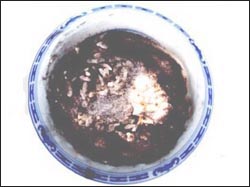
사진 178. 집 안팎에서 자라는 곰팡이나 몰드로 천식 발작이 유발될 수 있다.
Copyright ⓒ 2011 John Sangwon Lee, MD., FAAP
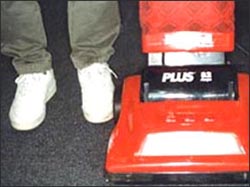
사진 179. 집 먼지나 집 먼지 진드기(집 먼지 좀 진드기)로 천식 발작이 유발될 수 있다.
Copyright ⓒ 2011 John Sangwon Lee, MD., FAAP
⑩ 나무나 풀의 꽃가루, 특히 레그위드 꽃가루 등 초목 화분으로 천식 발작이 유발될 수 있다.
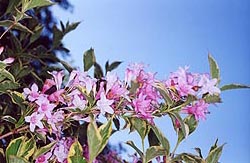
사진 180. 초목의 화분으로도 천식 발작이 유발될 수 있다.
Copyright ⓒ 2011 John Sangwon Lee, MD., FAAP
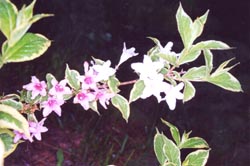
사진 181. 초목의 화분으로도 천식 발작이 유발될 수 있다.
Copyright ⓒ 2011 John Sangwon Lee, MD., FAAP
⑪ 집 먼지나 집 먼지 진드기(집 먼지 좀 진드기), 또는 바퀴벌레 등으로 천식 발작이 유발될 수 있다.
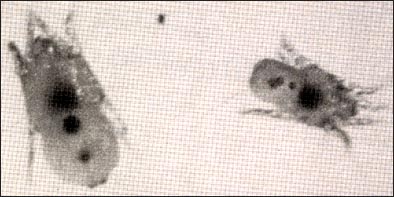
사진 323. 집 먼지 진드기 확대 사진.
집먼지진 드기(집 먼지 좀 진드기)의 크기는 3mm되는 절지동물이다. 소스; www.gazoontite.com
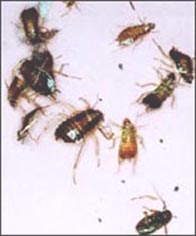
사진 183. 바퀴벌레로 천식 발작이 유발될 수 있다.
Copyright ⓒ 2011 John Sangwon Lee, MD., FAAP
⑫ 위식도 역류로 천식 발작이 유발될 수 있다.
영유아들이 먹은 인공영양, 모유, 또는 다른 종류의 음식물이 위 속에서 식도 속으로 역류될 수 있다. 그런 위식도 역류로 천식 발작이 유발될 수 있다.
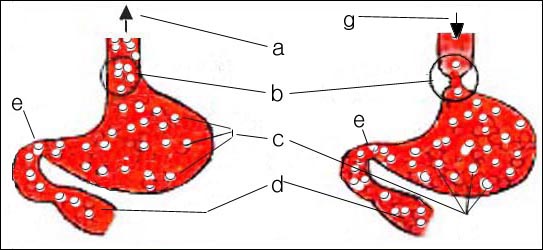
그림 184. 위식도 역류로 천식 발작이 유발될 수 있다
a-위식도 역류가 있는 경우(좌), 위식도 역류가 없는 경우(우), b-분문, c-가스와 위 내용물, d-십이지장, e-유문, g-위식도 역류가 없는 경우. Copyright ⓒ 2011 John Sangwon Lee, MD., FAAP
⑬ 부모 형제자매들 사이에 생긴 불화와 갈등, 친구나 또래들 사이의 갈등, 스트레스, 또는 정신적 불안 등으로 기관지 천식 발작이 유발될 수 있다.
⑭ 엄마의 젖을 먹고 자라지 않은 아이들에게 천식이 더 잘 유발될 수 있다.
출처; Contemporary pediatrics, January 2009. p.16.
⑮ 그 외 다른 유발인자로도 천식 발작이 유발될 수 있다.
The mechanism of development of asthma attack symptoms and signs
Mechanisms by which symptoms and signs of asthma occur
• Asthma symptoms differ depending on several conditions, such as the degree of constricted and narrowed airways, the amount of phlegm (mucus) secreted into the airways, the age of the child, and the presence or absence of complications. (Bronchi and airway are sometimes used interchangeably here.)
• In severe asthma attacks, the airways become more constricted and narrower.
• Air inhaled through the nose or mouth passes through the narrowed airways normally, enters the alveoli, and then does not sufficiently enter the pulmonary blood vessels in the alveoli. It makes it difficult to exhale through the nose or mouth.
• When you have a severe asthma attack, if you breathe normally, as you normally would, you have to breathe more often and it’s hard to breathe because you can’t get enough oxygen.
• As you usually do without an asthma attack, you don’t get enough oxygen, so you’re breathing more frequently and short of breath as you develop oxygen starvation, or hypoxia. If you don’t get enough oxygen, your face turns pale, your mind becomes restless, and you become nervous.
• Symptoms when a mild persistent asthma attack is triggered are usually significantly milder than those in severe asthma.
• When an asthma attack is triggered, to varying degrees, sticky mucus may be secreted from the bronchial mucosa into the bronchial airways (see Figure 164).
• Depending on the amount and degree of sputum secreted, the degree of blockage in the airways varies and a person coughs to spit out the sputum.
• The sputum in the airway vibrates with air going in and out of the airway every time it is breathed, and the sound of sputum is said to boil.
• When an asthma attack is triggered, if part or a large part of the airway is blocked with sputum secreted into the bronchi, breathing becomes difficult and the person coughs to spit out the sputum. Even if there is no phlegm to spit in the airways, if the bronchial tubes are stimulated by inflammation caused by the airways, coughing occurs.
• In general, children with a history of asthma who have had an asthma attack in the past are healthy and without symptoms such as coughing, shortness of breath, and boiling sputum for as long as they do not have an asthma attack.
• Then, if the airway is stimulated by an asthma attack trigger, the asthma attack may be triggered again and symptoms of bronchial asthma may appear.
• In this case, if the symptoms of an asthma attack are properly treated, the asthma attack will get better, but after that, if you are exposed to an asthma attack trigger, the asthma attack will be triggered again. As a general natural course of asthma.
• Asthma attacks are caused by severe bronchoconstriction and narrowing of the airways in the bronchial part of the airway. When you exhale and inhale air, there may be a hoarse or hoarse breathing sound. In particular, breathing sounds similar to a whistling sound when exhaling air may be produced. When exhaling in this way, a breath sound similar to a whistling sound is called aerobic wheezing, or asthmatic sound.
• In severe asthma attacks, the sound of breathing during exhalation is called expiratory wheezing, and in the presence of croup, stenosis is usually produced while breathing hard. This breathing sound is called an inspiratory stridor.
• When asthma attacks are very mild, wheezing may be barely noticeable and audible, and in severe asthma attacks, wheezing may not be as high as it is because you cannot breathe normally. In this case, wheezing cannot be heard with the bare ear, but wheezing can be heard when examining with a stethoscope.
• Breathing abnormally and very weakly when a severe and persistent asthma attack is triggered. There are times when I have mild persistent asthma attacks that are almost inaudible and sometimes I can’t hear the wheeze with my bare ear without a stethoscope, even though I have wheezing in my airways when I’m breathing quietly. For this reason, some parents ask, “How do you get a diagnosis of asthma when you don’t even have wheezing?” • When you have mild persistent asthma, wheezing is rare in most cases, but if you are physically active more than usual, it can be noticeable.
• When a child with mild persistent asthma is mentally and physically stable, wheezing may be rare, but if it is intentionally difficult to breathe and takes a deep breath, it can be so loud that it can be heard with the bare ear.
• When a moderate or severe persistent asthma attack is triggered, it is common to have a colorful breath, gurgling, or whistling aerobic wheezing with each exhalation. And aerobic wheezing can be loud enough to be heard with the bare ears of a child with asthma and those around him.
• When a severe and persistent asthma attack is triggered, breathing is often difficult, so the inhaled air cannot pass through the bronchial airway and enter the alveoli properly, and the air cannot escape from the alveoli. In other words, you cannot inhale or exhale normally and breathe very weakly.
• Occasionally, severe and persistent asthma attacks are severely triggered, but wheezing may not be heard at all. Life is at risk when you have severe persistent asthma that is this severe.
• A very mild, persistent asthma attack in infants or school-age children may cause a cough without wheezing. • Mild asthma attacks, especially at night, with no wheezing or coughing, but frequent waking During the night while sleeping, you can cough without hearing or wheezing, so you can’t get a good night’s sleep.
• Coughing and vomiting may occur, and most children with asthma have asthma in which they cannot hear wheezing with their bare ears.
The absence of wheezing or the absence of wheezing does not diagnose bronchial asthma or non-bronchial asthma.
A summary of the mechanisms that trigger asthma attacks
• Exposure of the airways of children born with asthma genetic factors to triggers can trigger asthma attacks. Asthma is treated as a hereditary respiratory disease.
• When an asthma attack is triggered by an allergen or antigen, it is called allergic asthma. The majority of childhood asthma in children is allergic asthma.
• When the airways are exposed to antigens inhaled through the mouth or nose, antigen-antibody adverse reactions occur in the airways.
So, when an asthma attack is triggered, the following changes usually occur in the airways:
① Histamine and leukotriene are secreted by mast cells and basophilic leukocytes.
② Major basophilic protein (MBP) is secreted
③ Prostaglandins and platelet activating factor (PAF) are produced in alveolar giant cells.
④ Biochemical substances such as histamine are called mediators.
⑤ These mediators act in a complex way, causing damage to the airway mucosal layer, swelling and inflammation of the airway wall, constriction of airway wall smooth muscles, constriction of airways, and secretion of mucus, which becomes sputum and coughs to spit out. will do
⑥ Histamine and various types of mediators act in a complex way, causing asthma attacks.
⑦ When the airways of children carrying asthma genetic factors come into contact with external or intrinsic triggers, asthma attacks may occur. When you eat food, such as milk or eggs, the protein in the food, that is, an antigen, can trigger an asthma attack.
⑧ There are various triggers that cause asthma, but in many cases, the triggers cannot be clearly identified.
Triggers for asthma attacks
① When any of the biological parents’ siblings have a past or present history of atopic dermatitis, allergic rhinitis, food allergy, asthma, drug allergy, poison ivy contact dermatitis, insect allergy, or other allergic diseases, or have atopic constitution Siblings in the household are very likely to suffer from allergic diseases such as asthma, allergic rhinitis, or atopic dermatitis. As such, asthma is a kind of hereditary disease.

Picture 108. ▴ Picture 168. Asthma is a hereditary disease. Copyright ⓒ 2012 John Sangwon Lee, MD., FAAP
② Physical exercise such as running, swimming, or running can trigger asthma attacks. Asthma attacks induced by physical exercise are called physical exercise-induced asthma or exercise-induced asthma.

Picture 169. Physical exercise can trigger an asthma attack. Copyrightⓒ 2011 John Sangwon Lee, MD., FAAP

Picture 170. Physical exercise can trigger an asthma attack. Copyrightⓒ 2011 John Sangwon Lee, MD., FAAP
③ Asthma attacks can be caused by colds, viral upper respiratory tract infections, viral lower respiratory tract infections, and other viral infections. Asthma caused by a viral upper respiratory infection such as a cold is called viral-induced asthma. Asthma attacks occur in 70% of infants and young children with a history of acute bronchiolitis. I don’t know for sure why.www.drpediatrics.com-Volume 8 Children and Adolescent Respiratory Diseases-Refer to Cold, Acute Viral Laryngitis

Picture 171. Asthma attacks can be caused by viral upper respiratory tract infections such as colds or flu, or viral lower respiratory tract infections. In general, when a bacterial upper and lower respiratory tract infection is present, it does not cause asthma attacks. Copyrightⓒ 2011 John Sangwon Lee, MD., FAAP

Picture 172. Asthma attacks can be triggered while sleeping, which is called sleep-induced asthma or nocturnal sleep asthma. Copyrightⓒ 2011 John Sangwon Lee, MD.FAAP
④ Tobacco smoke, smoke from factory chimneys, automobile exhaust, polluted air, odors and vapors from gasoline, paint, volatile chemicals, toxic gases, perfumes, cosmetics, or cleaning chemicals can trigger an asthma attack. However, this is not allergic asthma.

Picture 173. Direct or secondhand smoke can trigger asthma attacks. Copyrightⓒ 2011 John Sangwon Lee, MD., FAAP

Picture 174. Certain medications, such as aspirin, can trigger asthma attacks. Copyrightⓒ 2011 John Sangwon Lee, MD., FAAP ⑤ Aspirin, vaccines, penicillin, anesthetics, or other drugs can cause asthma attacks.
⑥ Food ingredients such as milk, eggs, nuts, peanuts, chocolate, fish, wheat flour, or food additives and artificial food coloring can trigger asthma attacks.
⑦ Cold air, changes in temperature, or changes in humidity can trigger asthma attacks. Asthma induced by cold air is called cold-induced asthma.

Photo 175. Cold air, changes in temperature, or changes in humidity can trigger asthma attacks. Copyrightⓒ 2011 John Sangwon Lee, MD.FAAP
⑧ Dogs, cats, bird hair, dander, saliva, and urine can trigger asthma attacks. Pillows or blankets made from animal fur or bird feathers can trigger asthma attacks. Sleeping on that type of pillow, especially when sleeping, can trigger nocturnal asthma attacks.

Picture 176. Dog hair, dander, and saliva can trigger asthma attacks. Copyrightⓒ 2011 John Sangwon Lee, MD., FAAP

Picture 177. Cat hair, dander, and saliva can trigger asthma attacks. Copyrightⓒ 2011 John Sangwon Lee, MD., FAAP
⑨ Asthma attacks can be caused by mold or mold, such as Alternaria.

Picture 178. Mold or mold growing inside and outside the house can trigger asthma attacks. Copyright ⓒ 2011 John Sangwon Lee, MD., FAAP

Picture 179. House dust or house dust mites (house dust mites) can trigger asthma attacks. Copyright ⓒ 2011 John Sangwon Lee, MD., FAAP
⑩ Pollen from trees or grass, especially from plants such as legweed pollen, can trigger asthma attacks.

Picture 180. Even pollen from plants can trigger asthma attacks. Copyright ⓒ 2011 John Sangwon Lee, MD., FAAP

Picture 181. Even pollen from plants can trigger asthma attacks. Copyright ⓒ 2011 John Sangwon Lee, MD., FAAP
⑪ House dust, house dust mites (house dust mites), or cockroaches can trigger asthma attacks.

Photo 323. Closeup of house dust mites. House dust mites (house dust mites) are arthropods with a size of 3 mm. sauce; www.gazoontite.com

Picture 183. Cockroaches can trigger asthma attacks. Copyright ⓒ 2011 John Sangwon Lee, MD., FAAP
⑫ Gastroesophageal reflux can cause asthma attacks. Artificial nutrition, breast milk, or other types of food eaten by infants and young children can reflux from the stomach into the esophagus. Such gastroesophageal reflux can trigger asthma attacks.

Figure 184. Gastroesophageal reflux can cause asthma attacks a- with gastroesophageal reflux (left), without gastroesophageal reflux (right), b-cardiac, c-gas and gastric contents, d-duodenum, e-pylorus, g-without gastroesophageal reflux. Copyright ⓒ 2011 John Sangwon Lee, MD., FAAP
⑬ A bronchial asthma attack can be caused by discord and conflict between parents and siblings, the conflict between friends or peers, stress, or mental anxiety
. ⑭ Children who do not grow up on mother’s milk may be more prone to asthma. source; Contemporary pediatrics, January 2009. p.16.
⑮ Other triggers can also trigger asthma attacks.
출처 및 참조 문헌 Sources and references
- NelsonTextbook of Pediatrics 22ND Ed
- The Harriet Lane Handbook 22ND Ed
- Growth and development of the children
- Red Book 32nd Ed 2021-2024
- Neonatal Resuscitation, American Academy Pediatrics
- A SUPPLEMENT TO PEDIATRICS, SYNAPSIS BOOK, BEST ARTICLES RELEVANT TO PEDIATRIC ALLERGY, ASTHMA, IMMUNOLOGY, PEDIATRICS OFFICIAL JOURNAL OF THE AMERICAN ACADEMY.12/2019
- Pediatrics, December 2021-Supplement to pediatrics- best article relate to pediatric allergy , asthma, immunology
- www.drleepediatrics.com 제1권 소아청소년 응급 의료
- www.drleepediatrics.com 제2권 소아청소년 예방
- www.drleepediatrics.com 제3권 소아청소년 성장 발육 육아
- www.drleepediatrics.com 제4권 모유,모유수유, 이유
- www.drleepediatrics.com 제5권 인공영양, 우유, 이유식, 비타민, 미네랄, 단백질, 탄수화물, 지방
- www.drleepediatrics.com 제6권 신생아 성장 발육 육아 질병
- www.drleepediatrics.com제7권 소아청소년 감염병
- www.drleepediatrics.com제8권 소아청소년 호흡기 질환
- www.drleepediatrics.com제9권 소아청소년 소화기 질환
- www.drleepediatrics.com제10권. 소아청소년 신장 비뇨 생식기 질환
- www.drleepediatrics.com제11권. 소아청소년 심장 혈관계 질환
- www.drleepediatrics.com제12권. 소아청소년 신경 정신 질환, 행동 수면 문제
- www.drleepediatrics.com제13권. 소아청소년 혈액, 림프, 종양 질환
- www.drleepediatrics.com제14권. 소아청소년 내분비, 유전, 염색체, 대사, 희귀병
- www.drleepediatrics.com제15권. 소아청소년 알레르기, 자가 면역질환
- www.drleepediatrics.com제16권. 소아청소년 정형외과 질환
- www.drleepediatrics.com제17권. 소아청소년 피부 질환
- www.drleepediatrics.com제18권. 소아청소년 이비인후(귀 코 인두 후두) 질환
- www.drleepediatrics.com제19권. 소아청소년 안과 (눈)질환
- www.drleepediatrics.com 제20권 소아청소년 이 (치아)질환
- www.drleepediatrics.com 제21권 소아청소년 가정 학교 간호
- www.drleepediatrics.com 제22권 아들 딸 이렇게 사랑해 키우세요
- www.drleepediatrics.com 제23권 사춘기 아이들의 성장 발육 질병
- www.drleepediatrics.com 제24권 소아청소년 성교육
- www.drleepediatrics.com 제25권 임신, 분만, 출산, 신생아 돌보기
- Red book 29th-31st edition 2021
- Nelson Text Book of Pediatrics 19th- 21st Edition
- The Johns Hopkins Hospital, The Harriet Lane Handbook, 22nd edition
- 응급환자관리 정담미디어
- Pediatric Nutritional Handbook American Academy of Pediatrics
- 소아가정간호백과–부모도 반의사가 되어야 한다, 이상원 저
- The pregnancy Bible. By Joan stone, MD. Keith Eddleman, MD
- Neonatology Jeffrey J. Pomerance, C. Joan Richardson
- Preparation for Birth. Beverly Savage and Dianna Smith
- 임신에서 신생아 돌보기까지. 이상원
- Breastfeeding. by Ruth Lawrence and Robert Lawrence
- Sources and references on Growth, Development, Cares, and Diseases of Newborn Infants
- Emergency Medical Service for Children, By Ross Lab. May 1989. p.10
- Emergency care, Harvey Grant and Robert Murray
- Emergency Care Transportation of Sick and Injured American Academy of Orthopaedic Surgeons
- Emergency Pediatrics A Guide to Ambulatory Care, Roger M. Barkin, Peter Rosen
- Quick Reference To Pediatric Emergencies, Delmer J. Pascoe, M.D., Moses Grossman, M.D. with 26 contributors
- Neonatal resuscitation Ameican academy of pediatrics
- Pediatric Nutritional Handbook American Academy of Pediatrics
- Pediatric Resuscitation Pediatric Clinics of North America, Stephen M. Schexnayder, M.D.
-
Pediatric Critical Care, Pediatric Clinics of North America, James P. Orlowski, M.D.
-
Preparation for Birth. Beverly Savage and Dianna Smith
-
Infectious disease of children, Saul Krugman, Samuel L Katz, Ann A.
- 제4권 모유, 모유수유, 이유 참조문헌 및 출처
- 제5권 인공영양, 우유, 이유, 비타민, 단백질, 지방 탄수 화물 참조문헌 및 출처
- 제6권 신생아 성장발육 양호 질병 참조문헌 및 출처
- 소아과학 대한교과서
- Allergy Management in clinical practice Louis Tuft
-
Food Allergy in Children Pediatric Clinics of North America April 2011
Copyright ⓒ 2014 John Sangwon Lee, MD., FAAP
“부모도 반의사가 되어야 한다”-내용은 여러분들의 의사로부터 얻은 정보와 진료를 대신할 수 없습니다.
“The information contained in this publication should not be used as a substitute for the medical care and advice of your doctor. There may be variations in treatment that your doctor may recommend based on individual facts and circumstances.
“Parental education is the best medicine.